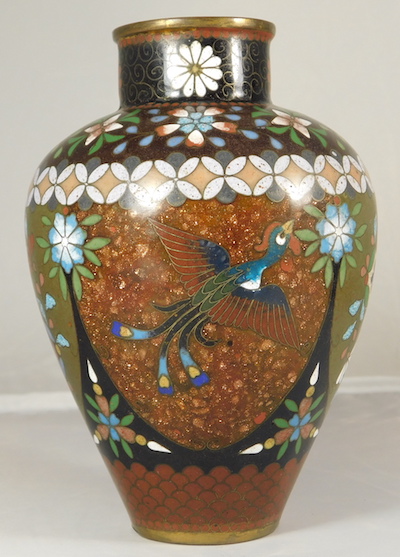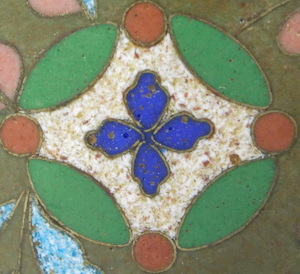Our next vase is the first to introduce decoration with the mythological Houou Bird. This is written many ways in English, including Hōō Bird, Hou-Ou Bird, Hō-ō Bird. In the Japanese hiragana alphabet it can also be written ほうおう. In Chinese the characters would be the same but it would be said Fenghuang.
There are various descriptions of its appearance. One suggests it has the head of a rooster, the beak of a parrot, and three legs along with various other curious features. As it is believed to have been first described in China, and then later introduced to Japan, it is again an element that cannot be easily used of itself to identify origin.
When more objects using Houou Birds are introduced later on it will be possible to make comparisons on design. For the moment it is enough to note that this one is splendid, with some wonderful colour particularly around the wings.
Looking at another decorative aspect of this vase, there are various ’roundels’, taking that term as broadly meaning a circular design as in these examples.
These are interesting for two reasons in addition to their beauty. Firstly, the complexity and quality of execution of these elements indicates a lot about the standards of the artist/workshop responsible for the creation of the design. Secondly, these designs are like a ‘fingerprint’ for the creator. If they are seen on other objects they can show a common workshop of origin. Looking at images 7.5, and 7.6 in particular, this workshop has a good skill level.
Object 7. Vase height 12.4 cm, weight 201 gm.
_ _ _ _ _ _ _ _ _ _ _ _ _ _ _ _







